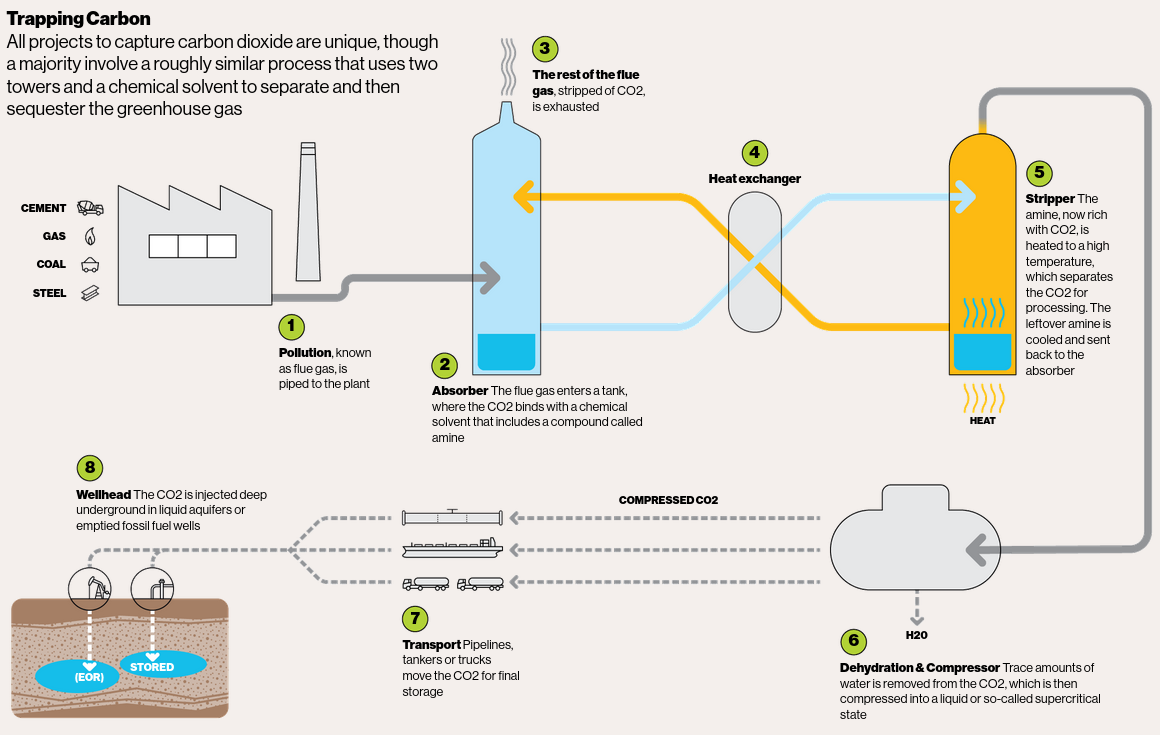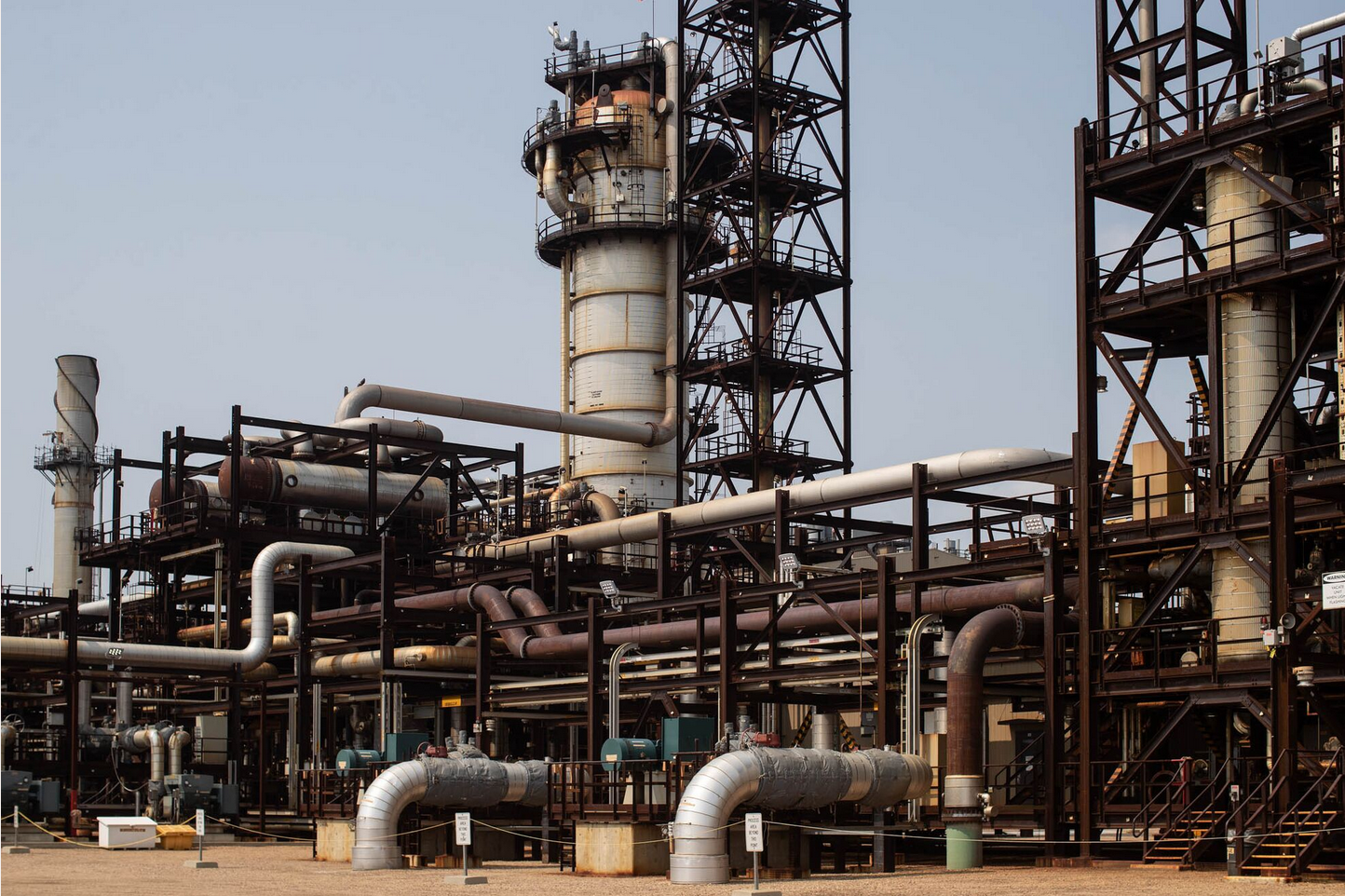September 13, 2023
Carbon Capture and Storage?
New York City will start their Climate Week this Sunday organized by The Climate Group. It is a corporate-focused event looking at what companies located in NYC are doing to address climate change. Of course, most companies in NYC are banks, financial institutions, and publicly traded companies. Expect more green washing than you have ever seen.
On the other side of the USA, California adopted laws for companies to disclose their carbon emissions. Such a law sounds fairly benign until you realize that events like "NYC Climate Week" would have to be canceled if company executives had to tell the truth. California is an important policy machine on the global level as it is the fifth largest economy in the world. Its 2022 legislation stopping the sales of gas cars by 2035 drove investment decisions in the auto sector world-wide. Canada, the world's 9th largest economy, has not taken up these positions.
How does this relate to carbon capture? Well, green washing and fairy tales are harder to tell when you look at the numbers.
If CCS actually worked—which it doesn't—to scale-up to be useful would cost $4.5 Trillion by the end of this decade (it is 2023).
In the last three decades, according to BloombergNEF data, governments and corporations have poured over $83 billion into projects. Last year the technology captured just 0.1% of global emissions.
Some 78% of large-scale demonstration and pilot projects initiated between 1995 to 2018 have been canceled or put on hold
(BN)
Again, if the technology worked—which it doesn't—, this would be the growth curve in investment:

The International Energy Agency says there are 40 total commercial operations in the world right now. Most of these are for getting more oil out of the ground and/or do not actually do anything. The IEA says 50 more are going to be coming online by 2030 (if they are not cancelled, which most will be) and that only gets us to 1/3rd the way to the necessary CCS level to reach our very low IPCC investments.
How much money are states putting in to this fantasy?
- USA: $15B
- UK: £20B
- EU: An unspecified amount of the 100B Euros for their green initiatives, mostly because they want scale up but do not believe it will work. They offer storage sites that are free from regulatory oversight.
-
Canada's subsidy has no ceiling:
- 60% for investment in equipment to capture CO2 in direct air capture projects
- 50% for investment in equipment to capture CO2 in all other CCUS projects
- 37.5% for investment in equipment for transportation, storage and use
Chevron is investing $10B in lowering its emissions intensity through 2028, but almost none of that is on CCS. $2B alone is carbon intensity of its oil production.
Shell has a station in Canada that captures 1 million tons a year while polluting a bunch trying to do this. It does not release the amount that it is polluting to capture carbon. Which makes the 1M ton rather pointless to report.
Shell wants to scale-up to 25M tons by 2030. How? No one really knows.
How does it work? Well, like I keep saying, it doesn't. But here is the diagram:

Most of that is magic beans since injecting or storing carbon at a rate that makes any of this interesting is the problem.
The real "offset" caused by these large machines of pipe are the purchased offsets Cheveron and other companies have to buy to make their targets.
The plants look like you would expect something that doesn't work looks:

Why does this matter? Because the fake math that was made-up to deal with climate change and keep us below 2 degrees is dependent on this technology working. It doesn't work and it is too expensive.
Also, the scale is seriously off. To achieve below 1.5 degrees at least a billion tons of CO2 needs to be removed through CCS by 2025. Current estimates get us to 150M tons if everything works (again, it doesn't).
This is not the solution we are looking for.
Aviation
It is a short note on aviation and pathways to net zero.
There isn't one.
For example, let's have a look at the cost if you could implement technologies which are mostly untested in the airline industry:

Notice that most of those costs are to offset CO2 emissions with CCS. This is an offset, not a reduction of CO2 in the atmosphere and so these additional CCS services are in addition to the non-existent CCS mentioned above.
The 2022 Inflation Reduction Act provide subsidies of up to $1.75 per gallon for production of lower emission SAF. Target output: 3 billion gallons by 2030. That's just the fuel production subsidy.
IATA, the group representing about 300 airlines, estimates getting to net zero by 2050 will require annual investments averaging close to $180 billion. Even if carriers pay only 65% to 75% of the total, the outlay may be too much to bear. (BN)
And, that's just passenger travel, not private jets.
While international air travel is just one of the many ways humans are heating the planet, its share of CO2 output is set to climb dramatically as other segments decarbonize — to an estimated 22% by 2050 from about 2% today if emissions aren’t cut fast enough.
Cleaning-up air travel's CO2 emissions is an unanswered question.
Environmental inequalities and electrification of trucking
A new study has estimated that the move to electric vehicles in heavy-duty trucking (and local logistics) will have a positive impact on the environment of some of North America's poorest communities.
Poorer communities tend to be nearer large trucking depots and intermodal terminal. People in these communities have been shown to be exposed to much higher rates of pollution leading to increased "environmental inequality" when compared to higher income neighbourhoods.
One benefit of expanded regulations forcing the move away from diesel fuel is quality of life in these neighbourhoods. In Canada, environmental racism has been a topic focusing on First Nations communities access to drinking water. However, poor communities tend to be more racialized in Canada outside First Nations as well.
The resulting question is that while the move to electric vehicles can be celebrated around transportation hubs, the regulations involving the generation of electricity, the production of these new technologies, and access to these jobs continues to be an environment-related equity issue.